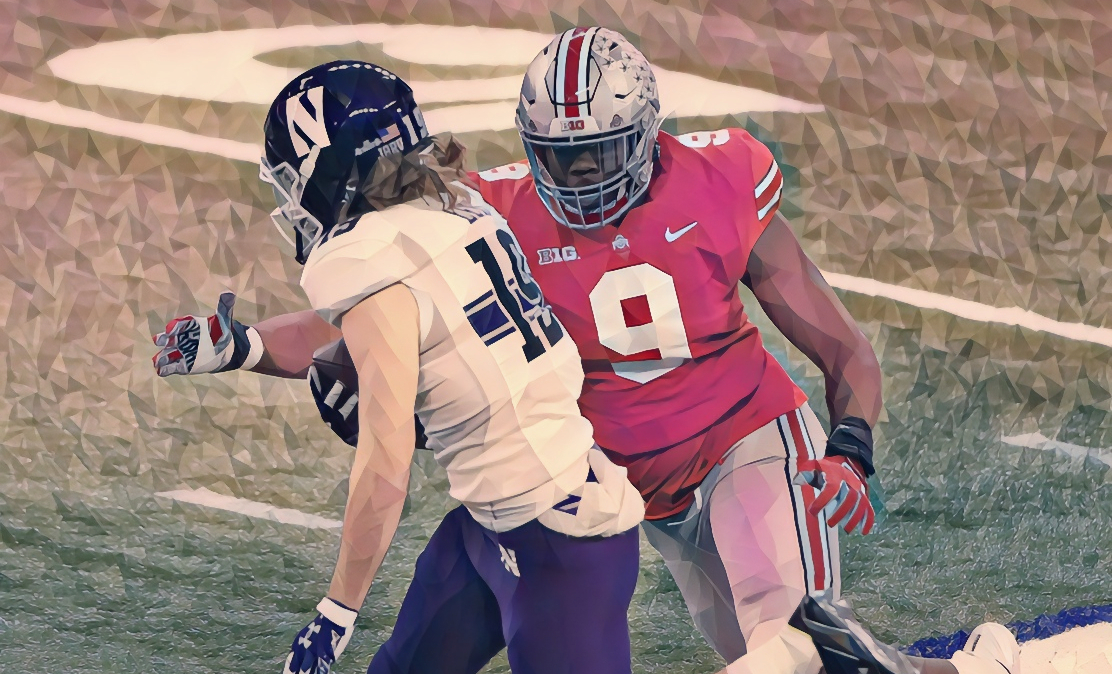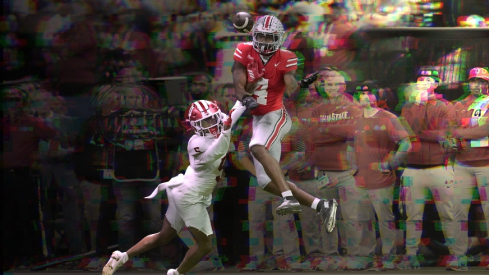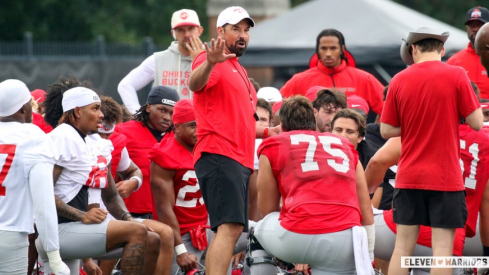The Big Ten stopped sharing championship valor only a decade ago.
Dual champions had been crowned 32 times prior to the 2011 installation of divisions and title game. Nine other seasons ended with tri-champs, beginning in 1903 with Michigan, Minnesota and Northwestern.
That so-called Ten Year War? It delivered only three outright titles - Ohio State in 1970 and 1975, and Michigan in 1971. Turns out it was an unwinnable war. But wait, it gets worse.
Undefeated Ohio State entered Ann Arbor in 1969 knowing Michigan would be the final game of its season. Even with a win, the Buckeyes would have been barred from returning to Pasadena because of an insidious no-repeat rule that was basically a conference shadow ban on dynasties.

So anyone thinking but but but head-to-head tiebreakers needs to understand that even those were situational. Burgeoning dynasties were squashed before they were allowed to flourish. No program could claim the throne for too long. The Big Ten was everyone's house.
In 1990 Illinois, Iowa, Michigan and Michigan State all "won" the conference, and if Ohio State hadn't tied Indiana that season the Buckeyes would have also gotten a piece of that crown. Literally half of the league (the Big Ten was still appropriately named in 1990) would have printed championship t-shirts. Quints! We were this close to quints!
So the next time some old crusty person gripes about how everybody gets a trophy these days ask them why there are 178 champions for a league that kicks off its 125th season next month.
| PROGRAM | B1G TITLES | OUTRIGHT | BEST STREAKS |
|---|---|---|---|
| CHICAGO | 7 | 6 | 2 |
| ILLINOIS | 15 | 8 | 2 (2) |
| INDIANA | 2 | 1 | 1 |
| IOWA | 11 | 4 | 2 |
| MARYLAND | 0 | 0 | 0 |
| MICHIGAN | 42 | 16 | 5, 4 (4) |
| MICHIGAN STATE | 9 | 5 | 2 |
| MINNESOTA | 18 | 7 | 3 (2) |
| NEBRASKA | 0 | 0 | 0 |
| NORTHWESTERN | 8 | 2 | 2 (2) |
| OHIO STATE | 40 | 24 | 6 (2), 4 |
| PENN STATE | 4 | 2 | 1 |
| PURDUE | 8 | 1 | 2 |
| RUTGERS | 0 | 0 | 0 |
| WISCONSIN | 14 | 8 | 3 |
This current era of B1G football reigns supreme for anyone who finds shared championships, randomized tiebreakers and alternating Rose Bowl trips to be nauseating.
Only 84 B1G teams can claim outright titles, 24 of them were from Columbus - and mercifully, outright is the only type of football title the B1G offers anymore. The conference that loves sharing so much it hyphenates literally all of its awards only recognizes one champion these days.
And these days it's a one-team conference. Ohio State has lost four games in conference play over the past nine seasons. That's a 70-4 stretch, and there's never been anything like it.
When the Buckeyes beat B1G West champ Northwestern to close the 2018 season they became just the 13th team in conference history to win outright titles back-to-back. The following season they delivered the B1G's first ever outright threepeat.

And then last December Ohio State ventured even further into the uncharted with the first outright B1G fourpeat. In 1990 the conference had four champions. Over the past four seasons it's only had one. None of this would have been possible prior to 2011.
If divisions and a title game had never materialized we'd be looking at seven Ohio State titles in nine seasons, with three of them being shared. The Buckeyes would have split with Michigan State in 2013 and Penn State in 2016 and finished second to Iowa in 2015 and Wisconsin in 2017.
Only 84 B1G teams can claim outright titles -- and 24 of them ARE from Columbus.
They would have been crowned tri-champs with Michigan and Northwestern in 2018. This Ohio State dynasty would have been diluted like every other one of the conference's first 115 seasons. Much has been made of how Ohio State is operating at its historic peak, but that's only half the story.
Ohio State has never been stronger and this is happening at a time when its conference no longer shares titles. It's never been more difficult to win a B1G football championship, and yet Ohio State is the overwhelming favorite to claim a fifth-consecutive one. No other program has more than two.
The Buckeyes enter the season as double-digit favorites in every one of their games. Ryan Day already owns the most outright B1G titles of any active coach in the conference. He's got more than Kirk Ferentz and Hayden Fry combined.
He already passed Joe Paterno. He can tie Jim Tressel and Urban Meyer this year! That's how dilutive the pre-divisional era was, and anyone missing the good old days of college football is confusing longing for how the Big Ten used to operate with their own expired youth.
We're 11 seasons removed from Ohio State having to fight for tepid, shared championship valor, and fortunately the current Buckeyes aren't built to share anything with anyone. The 2021 edition - like most of the previous editions of the past decade - are constructed to solve all tiebreakers on the field.
There was a time when no program could claim the throne for too long, as the Big Ten was everyone's house. That house was foreclosed and razed, so if any B1G program is interested in ending the current dynasty they'll have to figure out how to do so without relying on a technicality.



